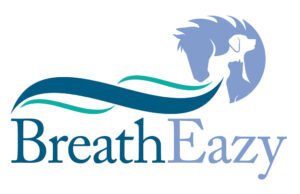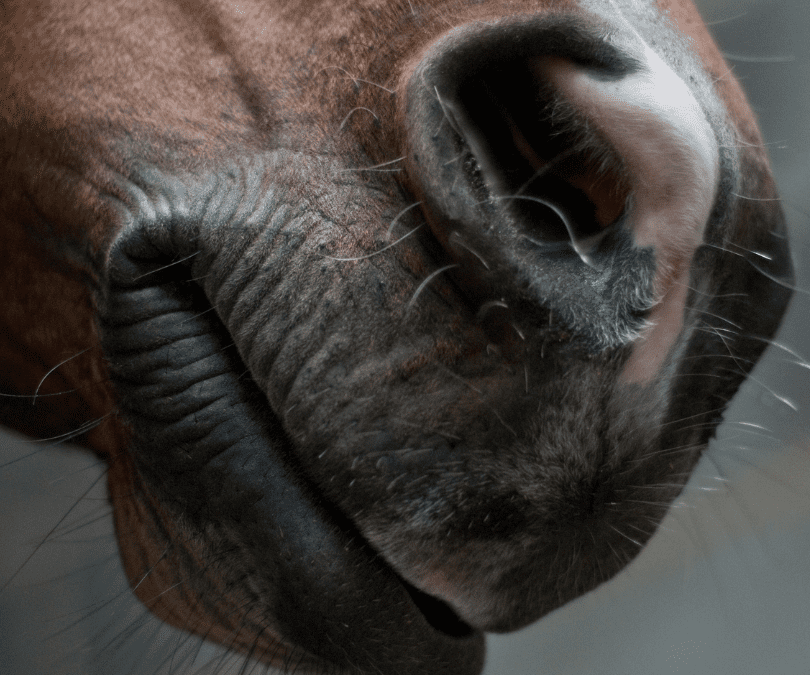Background information
Some owners, trainers and riders believe tongue ties in racehorses, and other pieces of tack including certain bits, can influence the position of the tongue during exercise, and therefore optimise performance. Others believe they are a potential welfare issue. Studies to investigate the evidence behind these beliefs are lacking, and debate is ongoing about the benefits and ethics of tongue-tie use in the racing industry. The Fédération Equestre Internationale (FEI) banned the use of tongue ties in performance horses in 2004, and their use in Thoroughbred (TB) racing in Germany was banned in June 2018. However, tongue ties are still allowed in Standardbred racing in Germany and many other countries permit tongue ties for Standardbreds and TBs – despite the ongoing discussions and public concerns regarding equine welfare.
What is a tongue tie in racehorses?
Commonly used in Great Britain and Australia, a tongue tie (or tongue strap) is a piece of leather, nylon or rubber which is tied over the horse’s tongue and under the mandible to fix the tongue in place. In theory, fixing the tongue position inhibits retraction of the larynx (because the larynx is connected to the tongue via the thyrohyoid bone), reduces pressure on the soft palate from the oropharynx, and also inhibits swallowing. This in theory reduces the likelihood of dorsal displacement of the soft palate (DDSP) and subsequent reduction in pharyngeal diameter, due to a reduction in negative inspiratory pressure and therefore reduced risk of pharyngeal/laryngeal collapse. Some hypothesise, however, that any increase in performance with a tongue tie is more likely to be related to improved control when horses cannot place their tongue over the bit.
What is DDSP?
DDSP is a commonly observed respiratory condition in racehorses undergoing strenuous exercise – potentially resulting in poor performance and increased noise at exercise. It is just one of the upper respiratory tract obstructive disorders which causes dynamic airway collapse in the exercising horse, resulting in increased respiratory noise and reduced performance. The other most common cause of airway collapse in TB racehorses is recurrent laryngeal neuropathy (RLN) – with epiglottal entrapment (EE), axial deviation of the aryepiglottic fold, vocal cord collapse, fourth branchial arch defects and arytenoid chondropathy also reported.
What’s new concerning tongue ties and DDSP?
Barton et al.’s recent study (2022) aimed to address whether the use of a tongue tie increases the pharyngeal diameter and decreases the likelihood of dynamic airway obstruction in racehorses. Evidence is lacking to support their use to improve airway function by reducing the likelihood of DDSP. The authors aimed to provide objective evidence to support or oppose the use of tongue ties in racehorses, and in turn influence equine sports organisations’ regulations on the use of tongue ties to optimise future racehorse welfare.
Study design
This was a prospective crossover blinded clinical study, with a small study population of 22 TBs and eight Standardbreds in Germany. Participants were recruited from a questionnaire focusing on the ethics of tongue tie use in Germany, where trainers and owners had the opportunity to apply for participation in the current study.
Freeze frames from overground endoscopy videos for study participants were analysed at the following time points:
- the beginning of the expiration phase at rest
- maximum intensity exercise with a tongue tie
- maximum intensity exercise without a tongue tie
Pharyngeal-epiglottic (PE) and laryngeal-median ratios were calculated at these points as a measure of pharyngeal diameter and laryngeal abduction respectively. Ratios were used to compensate for the differing distance between the endoscopy camera and soft tissue structures, which changes with differing head and neck positions.
Occurrences of DDSP and other forms of dynamic airway obstruction such as RLN, axial deviation of the aryepiglottic folds and vocal cord collapse, were also documented by the video observers who were blinded to whether a tongue tie was applied or not.
The horses were exercised in their usual tack – with or without a tongue tie. Distance, type of racetrack and speed varied between horses due to differences in TB vs. Standardbred racing, age and fitness. However, sufficient exercise intensity was ensured by inclusion criteria of a 4mmol/L venous lactic acid level to confirm anaerobic metabolic level had been reached.
Study validity
Strengths
- Although not randomly chosen, racehorses included in the study all had a history of exercise intolerance and abnormal respiratory noise, therefore were representative of individuals in whom veterinary surgeons may question optimum pharyngeal diameter or DDSP
- Overground endoscopy was performed during high-intensity training exercises and in pairs to simulate a racing situation
- A range of ages and mares/stallions/geldings were all included in the study
- The paper has a high level of authority due to the publishing journal (Equine Veterinary Journal) and therefore provides good quality evidence
- The study is relatively high up in the hierarchy of evidence due to its study design
- Data analyses were explained well
- Data was normally distributed and the statistical methods chosen appear to be appropriate to the study design
- No recall or detection biases were present, as this was a prospective study and video observers were blinded to whether or not a tongue tie had been placed
- Reporting was clear – all horses were accounted for, and a comprehensive methodology was outlined with sufficient detail for the study to be repeatable
Weaknesses/limitations
- The study population was not randomly chosen – owners/trainers had applied to be included in the study
- The study size was small – data from only 22 TBs and eight Standardbreds were analysed (eight TBs were excluded due to poor overground endoscopy image quality)
- Not all horses in the study had worn tongue ties previously, however, the percentage of horses used to the application of tongue ties during training was comparable to horses naïve to a tongue tie
- Randomisation of racing with/without tongue tie was not possible in the TB group (although this was possible in the Standardbred group)
- Low numbers of DDSP cases during exercise (four of 38 horses) meant statistical comparison of the rate of DDSP with/without tongue ties was not possible
- Due to low numbers of horses affected by e.g. DDSP, RLN – the study did not manage to address the second objective of the study of whether tongue ties decrease the occurrence of dynamic airway obstruction in racehorses
Study findings
Pharyngeal diameter
A significant increase in PE ratio between rest and full-intensity exercise was found in all horses. The increase in PE ratio was only statistically significant without the use of tongue ties. Five of eight Standardbreds and 16 of 22 TBs had an increased PE ratio at exercise compared with the ratio at rest; application of the tongue tie led to a decrease in mean PE ratio in four of five of these Standardbreds and 15 of 16 of these TBs (compared with maximal diameter without a tongue tie); the tongue tie did the opposite of what the authors of the study expected – instead of widening the pharynx, it led to a reduction of pharyngeal diameter in up to 93% of horses.
Laryngeal parameters
Tongue tie application increased laryngeal width at 2/3 of height and relative aperture angle, while maximum width and area did not differ significantly. Under maximum exercise, the values were higher with a tongue tie than at rest, with differences in width at 2/3 of height and angle being statistically significant. Values under maximum exercise without a tongue tie were close to those of the resting examination. Differences between horses that had/had not previously been exercised with a tongue tie were not detected.
Dynamic airway obstruction
DDSP was found in four of 30 examinations with a tongue tie, and in one of 30 examinations without a tongue tie. Due to these unexpectedly low numbers, statistical analysis was not performed. In seven horses, endoscopy at rest revealed RLN grade IIa, and in three horses RLN grade IIb was found. Evaluation of laryngeal function of these horses during peak exercise showed full abduction in nine horses (grade A) and insufficient abduction in one horse (grade B). The mean PE ratio of horses with DDSP was larger than that of horses without dynamic airway obstruction and RLN at rest, during peak exercise with and without tongue tie.
Conclusions and clinical relevance
Tongue ties were not found to have a significantly positive effect on pharyngeal diameter or maximum laryngeal width in this study, therefore the results do not support the use of tongue ties to enhance upper respiratory function, nor do the study findings support their use to prevent DDSP. Pharyngeal diameters during strenuous exercise were in fact reduced by tongue tie application. It is also of note that the prevalence of DDSP was relatively low in this study, which should discourage the assumption that DDSP is responsible for poor performance and increased noise at exercise – and should discourage automatic use of tongue ties if DDSP is suspected, especially given the concerns about the ethics of their use. These results may provide objective evidence for future decisions of equine sports organisations regarding tongue tie regulations.
For more equine-related blogs, visit our website.

